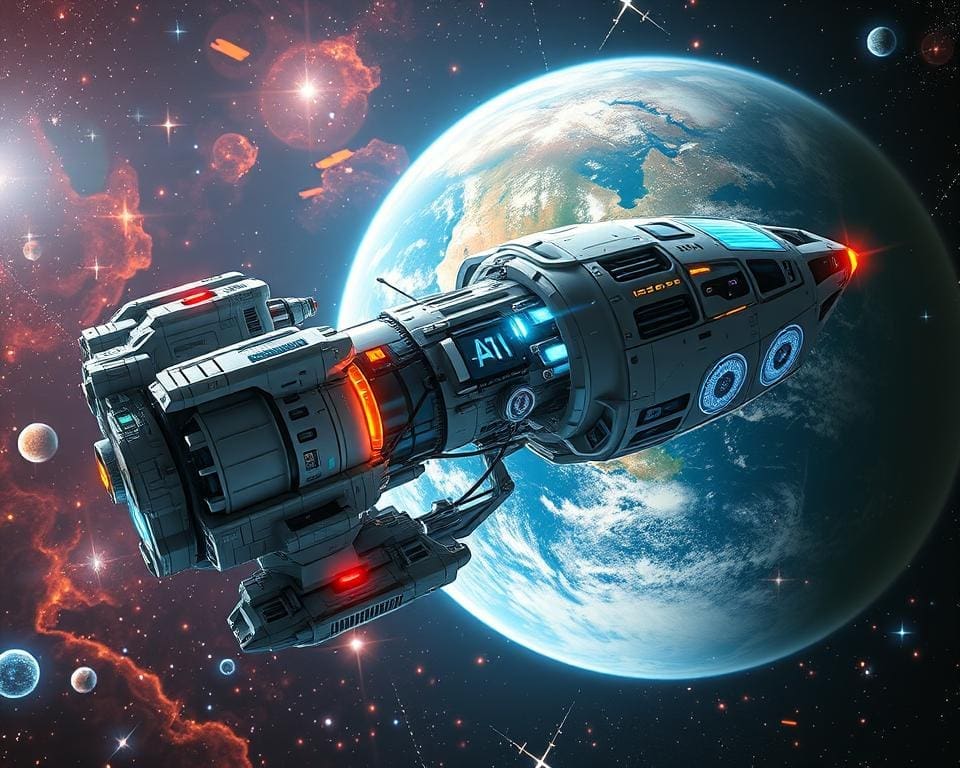The integration of AI in space missions is a pivotal advancement in space technology, revolutionising the way we explore the cosmos. Artificial intelligence facilitates enhanced precision and safety, critical in the demanding environment of outer space. By employing advanced algorithms and machine learning, we can achieve remarkable accuracy in data collection and analysis, which directly influences navigation and system performance. As noted in NASA’s AI in Space report, the incorporation of AI technologies significantly reduces human error and optimises decision-making processes during missions. Additionally, the European Space Agency (ESA) is making substantial investments in AI research, aiming to create autonomous systems capable of adapting to unpredictable space conditions. This dedication to precision engineering in space highlights the transformative potential of AI, setting new boundaries for what is achievable in aerospace exploration.
The Role of AI in Space Technology
The integration of AI within space technology stands as a transformative force, enhancing both operational efficiency and decision-making capabilities. As the field evolves, machine learning in aerospace plays a pivotal role, enabling space missions to achieve unprecedented precision and effectiveness.
Transforming Traditional Operations with Machine Learning
Machine learning in aerospace revolutionises traditional mission operations, shifting the paradigm towards automation. Routine tasks such as monitoring spacecraft systems or processing telemetry data can now be managed through intelligent algorithms. By automating these functions, human controllers can focus on critical aspects of missions, significantly reducing the workload.
Enhancing Data Analysis through Advanced Algorithms
Advanced algorithms in data analysis are essential for managing the vast amounts of information generated by space missions. These algorithms transform raw data into meaningful insights, thus fuelling informed decision-making. For instance, various satellite systems rely on advanced algorithms to analyse weather patterns, improving forecasting accuracy. Such capabilities exemplify how AI in Space Missions is reshaping our understanding of the universe.

AI in Space Missions: Enhancing Precision and Safety
The integration of AI into space missions has revolutionised the way we approach navigational challenges and orbital mechanics. With an emphasis on precision engineering in space, AI technologies are not merely tools, but essential elements that optimise flight paths and improve overall mission effectiveness. As we explore the cosmos, having a reliable system that can predict and calculate the most efficient trajectories becomes paramount.
Improving Navigation and Orbital Mechanics
One of the standout examples is NASA’s Autonomous Navigation System for Aerial Vehicles (ANSAV), which employs sophisticated algorithms to determine optimal trajectories in real-time. This application of navigational AI technologies significantly enhances navigation accuracy, enabling spacecraft to execute their missions with greater confidence and reliability. As a result, the role of AI in ensuring precision in flight paths cannot be overstated.
Moreover, the application of AI in orbital mechanics has ushered in a new era of satellite management and debris tracking. The European Space Agency (ESA) has developed advanced systems capable of predicting potential collisions by monitoring and managing satellite formations. The intersection of orbital mechanics with AI not only safeguards these assets but also optimises their operational efficacy, underscoring the critical importance of AI in nurturing a safer and more navigable space environment.









